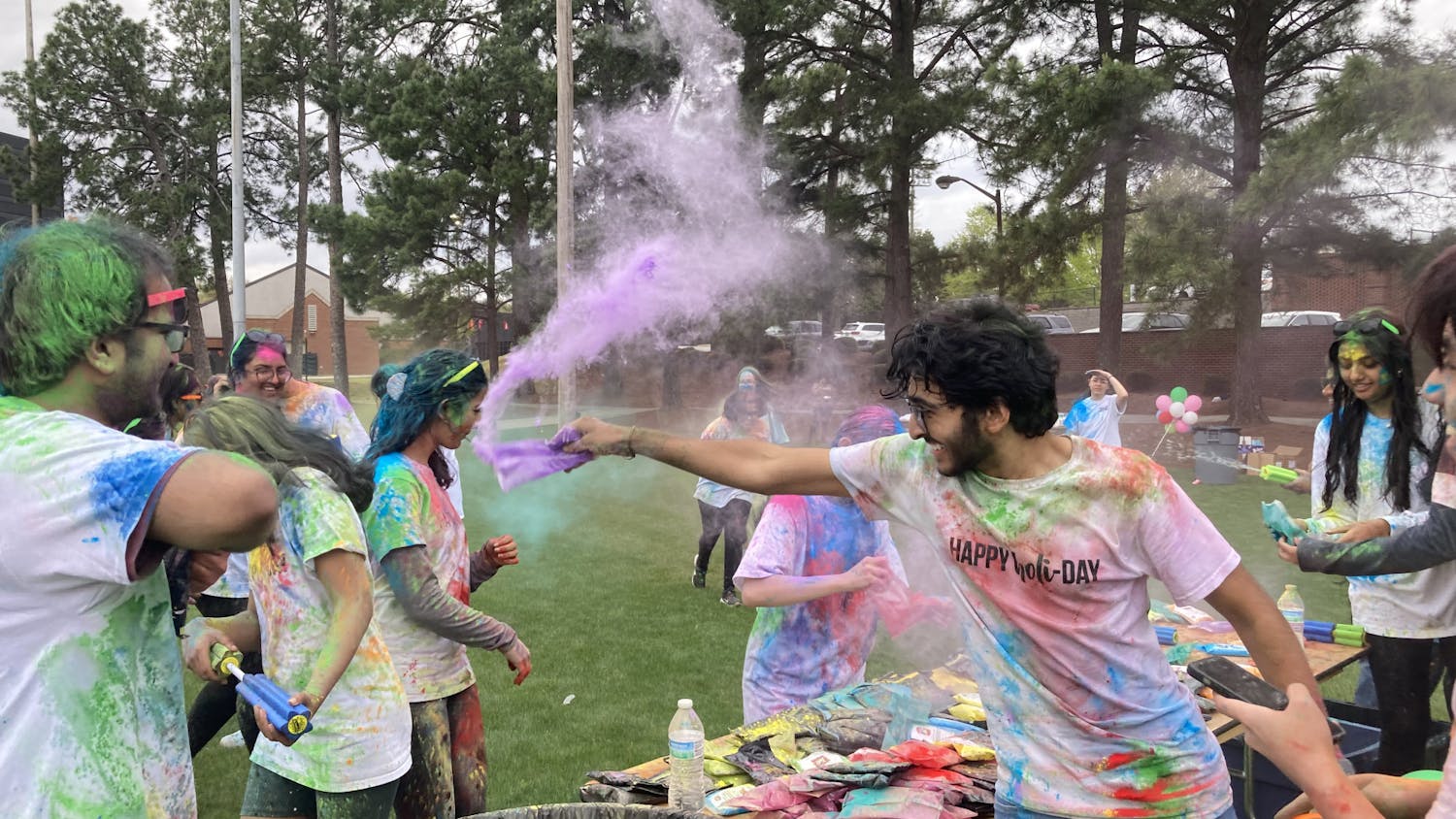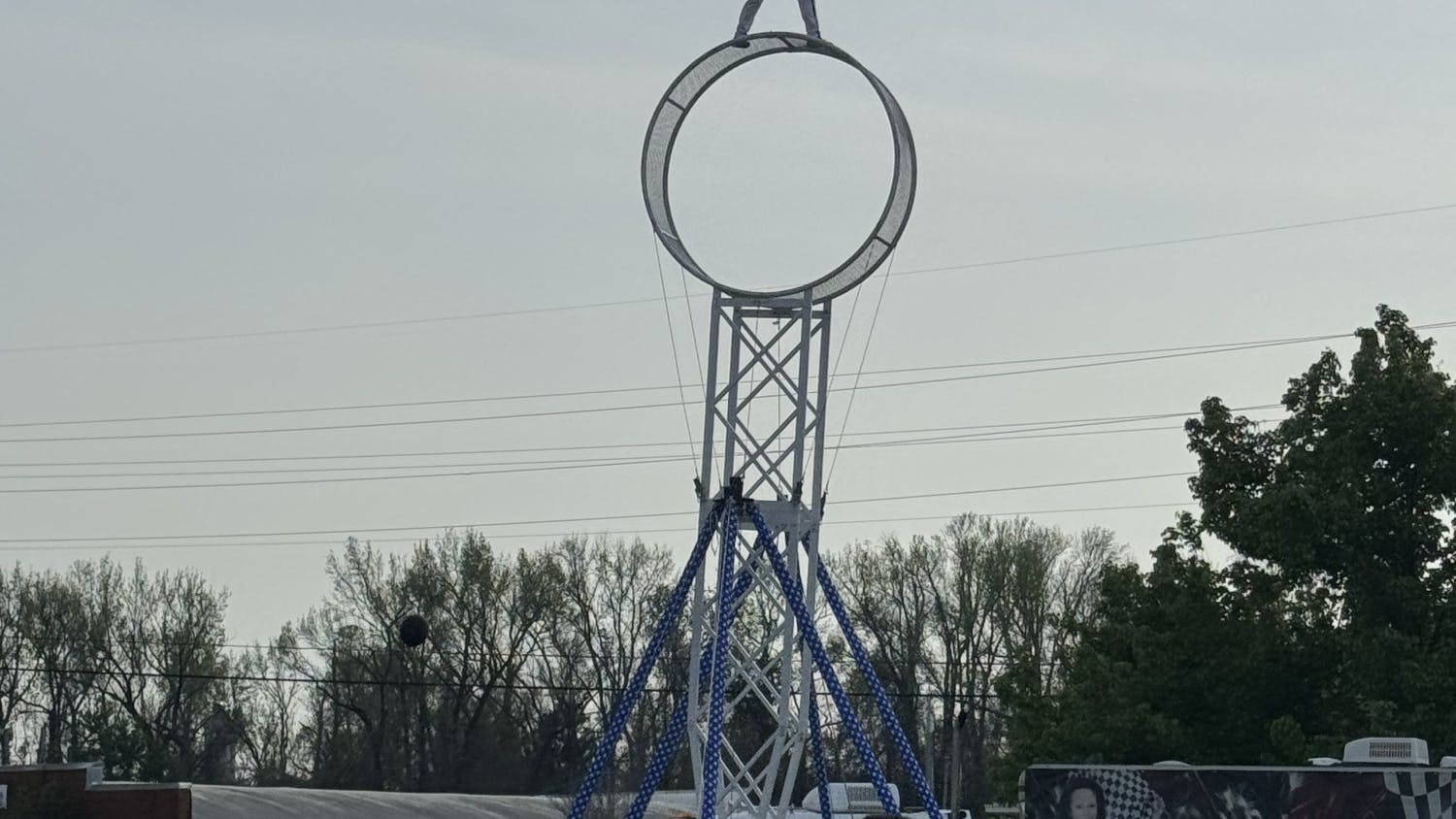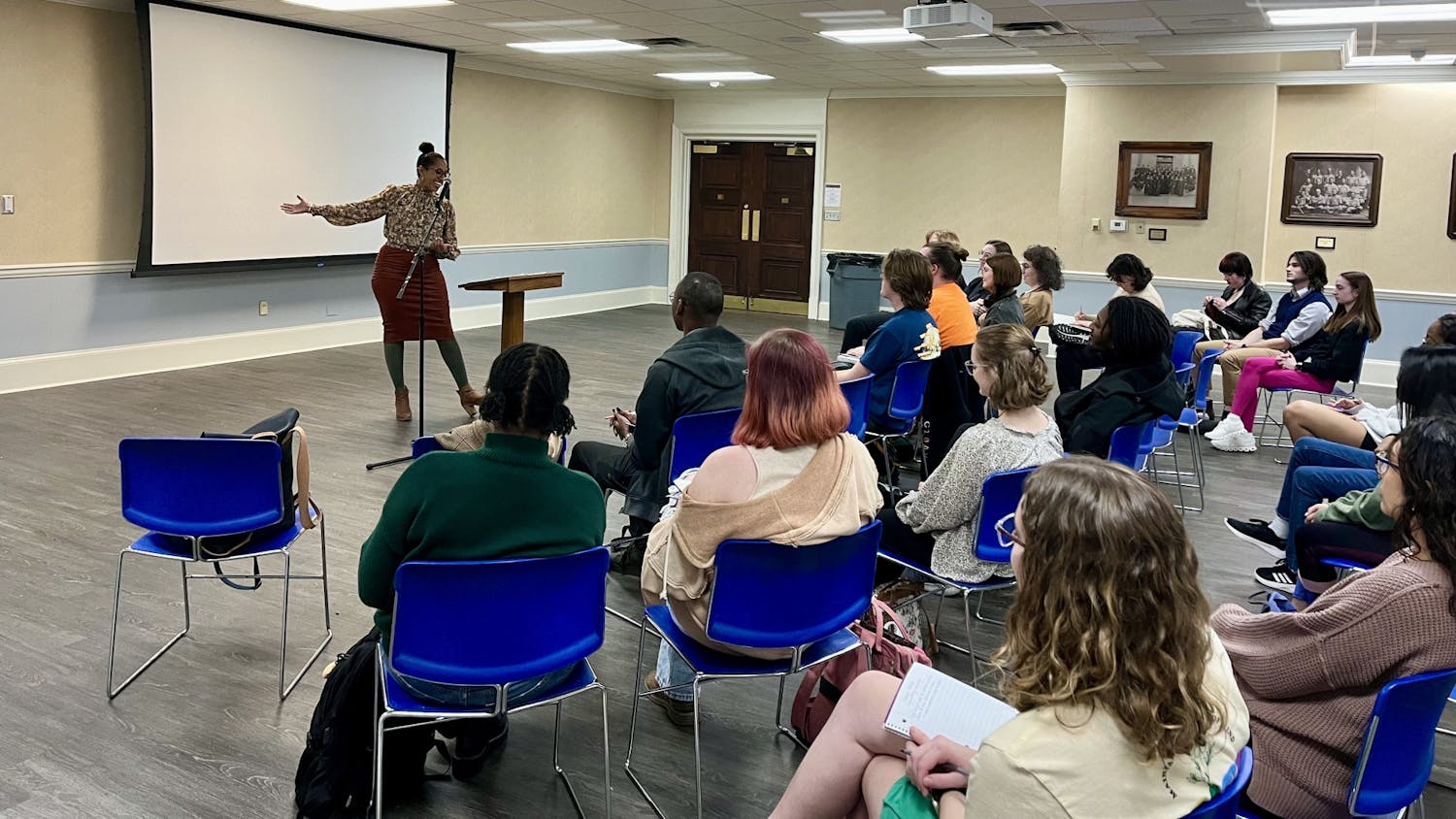Turning the ordinary into works of art seemed to be the theme of Plunkett Gallery’s most recent exhibition, entitled “Have You Ever Asked Me for Something That I, That I Wouldn’t Do?” The exhibition presented the works of Galen Olmsted and Budd Dees, who received MFAs from the University of Florida one year apart. With a total of six pieces, the exhibition included two works by each artist and two collaborative pieces.
At the closing Gallery Talk and Reception, Olmsted in person and Dees on Skype asked each other questions to provide thorough information for the handful of students present on the sunny afternoon before Good Friday.
First, Dees asked Olmsted about his processes for making his pieces. Olmsted’s two pieces were called “Angel Shit” and “Boulder.” The former, made of white porcelain, sprawled across the corner of the gallery floor, taking no distinctive shape, but rather incorporating a variety of vague shapes. Olmsted explained that as part of his graduate thesis, he used a machine called an extruder to work with porcelain. He further explained that the purpose of the extruder was to create cylinders out of the porcelain, but that he only wanted to use the leftovers. Budd prompted him with a reminder that the question was whether the production process carried significance. Olmsted said, “An extruder is like your butt. If an angel were to shit, it would be porcelain.”
His other piece, a conglomeration of plaster, wire, and canvas, was entitled “Boulder,” but the two artists joked that it might be better entitled “Spitball.” The large papier-mache mass did indeed resemble a spitball, as the medium itself was wet paper that had dried in a round shape. Olmsted shared his production process, which began with a fascination with spherical forms. He found that the best method to form a sphere from chicken wire was to cut the wire like a flattened world map, then roll it up like a globe. He covered the wire in plastic-dipped canvas, then applied plastic to the drying paper for texture. The plastic peeled off after the paper dried.
Dees’ pieces were papier-mache as well, and Olmsted asked why he preferred to work with that material. Dees contrasted his work with Olmsted’s, describing the difference as “degrading porcelain versus taking something kindergartners use and treating it seriously.” Dees’ piece “Many Acceptable Forms” resembled what one might find in a kindergarten classroom. A variety of colorful papier-mache blocks peppered the floor, spread out and not physically connected to one another. Dees used paper products found at corporate office supply stores, keeping the basic colors provided there. Though the colors were what he termed “friendly, quirky, welcoming,” they were not meant to disguise potential emotions behind the work, such as anger or sadness.
Dees’ other piece was a blue, boulder-shaped papier-mache invention covered in brown fur, with some shredded fabric on one side. The title attached was “Werewolf Boyfriend (Sans Abs),” demonstrating the artist’s sense of humor. Dees expressed the difficulty of working with materials that do not have the durability of clay or metal. “The project is a failure if it crumbles,” said Dees. “How do I deal with the fact that these materials can constantly change?” He spoke of the risk of transporting these items, reconciling himself with the fact that they may come back broken or cracked.
To finish the gallery talk, Dees and Olmsted told the stories behind the collaborative pieces. Collaboration #1 included Adrian Brun, an artist the two met while living in Berlin after graduation. Collaboration #2 featured Jill Frank, a photographer whose subject is fraternity parties. Dees said that collaboration is “about saying yes to someone, hands off.” The process of these collaborations allowed each artist one chance to add to and rearrange the content of the pictures. As a result, the artists had to trust one another.
Serious Papier-Mache
Comments




